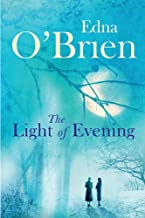
Imagine a collage, an assemblage of the entire output
of august artists, especially those of fin-de-siecle France, those one-time
upstarts and latter-day establishment pillars we have since learned to label
“Impressionist”. Imagine too this vast canvas repeated in multiple shades, so
that not only does it present to the eye a vast, near limitless, expanse of
colour, of detail, of form, of fine ladies in finer drapery, of gardens replete
with blooms of every season, of carriage-jammed Paris streets shining through
murky wet evenings, of multi-coloured lilies afloat on a surface of quiet lakes
or stilled streams of rural France, of dancing girls performing their ballet or
rehearsing their slender limbs in outline at the bar, but also it revisits
every view from multiple angles in different colours, at different times, from
different perspectives with different impressions. We seem to see the same
things repeat, repeatedly, but always different, always changed, always vivid.
And imagine this presented not only in the bright colours of the original, but
also the imposed hues of vividly recalled memory that knows every scene, but
cannot fix exact date, time or form, so that they re-form truly solid, living
structures reconstructed from what the original eyes only partially recorded.
And then close those eyes, so that the images can be drawn from their memories,
those indelibly, but perhaps inaccurately filed images that we have collected
inadvertently by virtue of the unfinished act of living. And then we share that
experience.
And then, in the words of the author, himself, so
it is with our own past. It is a labour in vain to attempt to recapture it: all
the efforts of our intellect must prove futile. The past is hidden somewhere
outside the realm, beyond the reach of intellect, in some material object (in
the sensation which that material object will give us) which we do not suspect.
And as for that object, it depends on chance whether we come upon it or not
before we ourselves must die.
But the imperative is that we must try. We have but
one chance shot at this moving target we call ‘life’ and our aim is, by its
very nature, wayward. We remain forever unsure of the boundary between what we
remember and what we imagine, especially when one merges into the other in that
uncontrolled manner, that imposed confusion of blurred edge that inevitably
results when we attempt to focus on a passing image and have only a memory of
its momentary impression on the mind to recall whatever detail it shed.
And the result? The result is a passing stream, an
ever-changing, forever variable vista that always comprises the same view, the
same solid objects that once, or perhaps still, peopled its banks. And, from
the distance of time, who can ever be sure what we felt? Who can be sure of
motive, of consequence, of intention or stratagem? Who can testify that those
remembered words were spoken in love, hate, respect, derision, criticism,
praise or merely to pass the time we now realise we never had? It is irony that
perhaps lasts longest, as in an invitation to dine with an acquaintance of the
family, M. Legrandin?
Only the day before he had asked my
parents to send me to dine with him on this same Sunday evening. "Come and
bear your aged friend company," he had said to me. "Like the nosegay
which a traveller sends us from some land to which we shall never go again,
come and let me breathe from the far country of your adolescence the scent of
those flowers of spring among which I also used to wander, many years ago. Come
with the primrose, with the canon's beard, with the gold-cup; come with the
stone-crop, whereof are posies made, pledges of love, in the Balzacian flora, come
with that flower of the Resurrection morning, the Easter daisy, come with the
snowballs of the guelder-rose, which begin to embalm with their fragrance the
alleys of your great-aunt's garden ere the last snows of Lent are melted from
its soil. Come with the glorious silken raiment of the lily, apparel fit for
Solomon, and with the many-coloured enamel of the pansies, but come, above all,
with the spring breeze, still cooled by the last frosts of wirier, wafting
apart, for the two butterflies' sake, that have waited outside all morning, the
closed portals of the first Jerusalem rose."
The question was raised at home whether,
all things considered, I ought still to be sent to dine with M. Legrandin.
Irony, then, leaves its mark, but not as deep as the
scars left by the cuts of young love, obsession or jealousy. In a vast,
detailed and probably reconstructed memory of M. Swann’s relationship with
Odette, a woman he initially likens to an image from a Botticelli painting in
the Sistine chapel, we share the heart-racing exhilaration of a man becoming
obsessed with the sensual beauty of a desirable and available woman, we
euphemistically accompany him in adjusting the flowers that decorate her bodice
and then we suffer the gnawing, destroying doubts about her motives that grow
out of an all-embracing, near-destroying jealousy.
There is, of course, much socialising. It would not be
far from the truth to observe that these people spend more time worrying about
whom to include and whom to specifically and justifiably exclude from a guest
list than they do at work, in their beds or on the road. And the decisions are
usually based on class, that universal categorising and branding of quality
that seems to suffuse and smother human society in whatever age and every place,
the very quality that revolutions might occasionally but unsuccessfully seek to
eradicate. And what happens at these gatherings remains primarily social,
whatever the focus of the soiree.
If the pianist suggested playing the Ride
of the Valkyries, or the Prelude to Tristan, Mme. Verdurin would
protest, not that the music was displeasing to her, but, on the contrary, that
it made too violent an impression. "Then you want me to have one of my
headaches? You know quite well, it's the same every time he plays that. I know
what I'm in for. Tomorrow, when I want to get up - nothing doing!" If he
was not going to play they talked, and one of the friends - usually the painter
who was in favour there that year - would "spin," as M. Verdurin put
it, "a damned funny yarn that made 'em all split with laughter," and
especially Mme. Verdurin, for whom so strong was her habit of taking literally
the figurative accounts of her emotions - Dr. Cottard, who was then just
starting in general practice, would "really have to come one day and set
her jaw, which she had dislocated with laughing too much.
And this is a place and time where no-one lives life
by halves, where no person is ever truly reticent in expressing emotion, even
when that which is quite sincerely expressed may, at some later date, convey at
least the partial sensation of over-statement. She had been taught in her
girlhood to fondle and cherish those long-necked, sinuous creatures, the
phrases of Chopin, so free, so flexible, so tactile, which begin by seeking their
ultimate resting-place somewhere beyond and far wide of the direction in which
they started, the point which one might have expected them to reach, phrases
which divert themselves in those fantastic bypaths only to return more
deliberately with a more premeditated reaction, with more precision, as on a
crystal bowl which, if you strike it, will ring and throb until you cry aloud
in anguish to clutch at one's heart.
Viewing this vast, sewn together patchwork of art,
this mixture of people thrown together by time and the filter of memory, may at
times feel like making an ocean journey by small boat, rigged with too scant a
sail, a boat that, often becalmed, seems to drift. The real trick, undoubtedly,
is to relax and go with the flow. That’s life, it seems.










